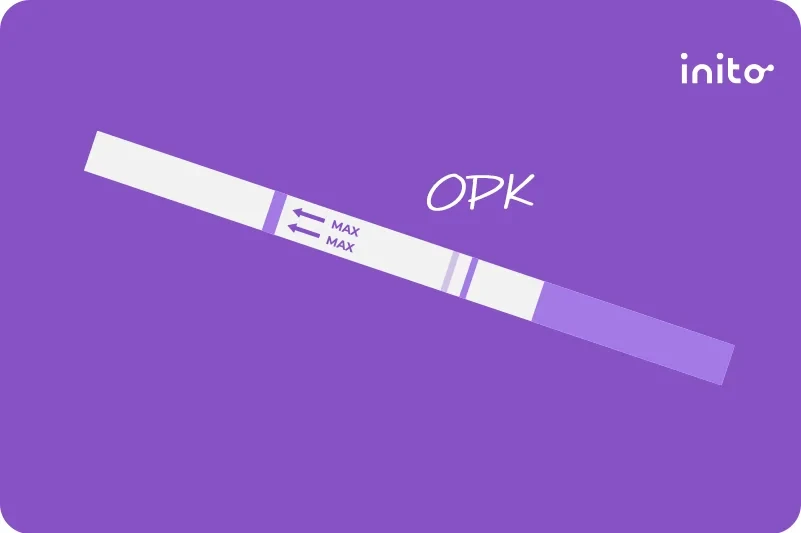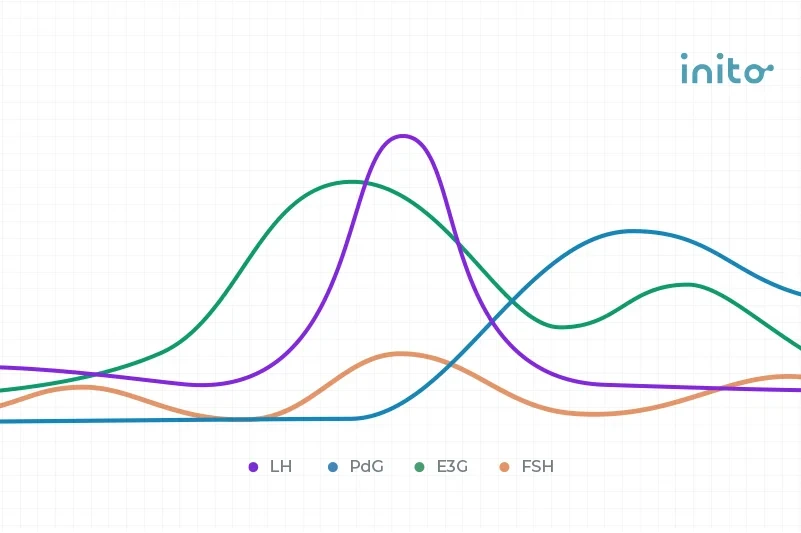Content table
Did you get a positive pregnancy test result but then a negative test the next day? You’re probably feeling confused and hoping to figure out what’s going on.
The truth is that this can actually happen for a couple of reasons. And it doesn’t necessarily mean you’re having a miscarriage. Evaporation lines, user error, and diluted urine are a few other possibilities.
Ready to learn more about positive pregnancy tests turning negative and their reasons? This article has all the answers.
Takeaways
- Home pregnancy tests work most of the time when used according to the directions. But getting a positive pregnancy test result followed by a negative one is possible. Don’t panic if this happens—you’re in no way alone in experiencing this.
- Your first test could have been a false positive. Or your second test could have been a false negative result.
- A false positive test result isn’t that likely, but it can happen for a few reasons. These include user error and having hCG in your system for some other reason.
- Sometimes it can be helpful to have a trusted friend or loved one help you interpret the results if they’re unclear. This may help you avoid thinking a test is positive when it’s actually not.
- False negative tests are possible too. They can happen due to user error, diluted urine, the “hook effect,” and using tests that have a lower hCG sensitivity.
- A third possibility is that both tests were correct. In that case, you may be having a chemical pregnancy, a type of very early pregnancy loss. Call your doctor if you think this is true for you. And know that we are here to support you. Join our Facebook group for a helpful community of other women TTC.
- Discuss any concerns or confusing pregnancy test results with your doctor.
Why did your positive pregnancy test become negative?
Getting different results on your pregnancy tests can be confusing, to say the least. So, let’s review the potential scenarios for why you got a positive and then a negative test result.
Below are the three major possibilities:
- Your first test result was a false positive
- Your second pregnancy test was a false negative
- Both tests were accurate, and you may be having a chemical pregnancy
Let’s get to the bottom of each of these cases so you know exactly what’s happening.
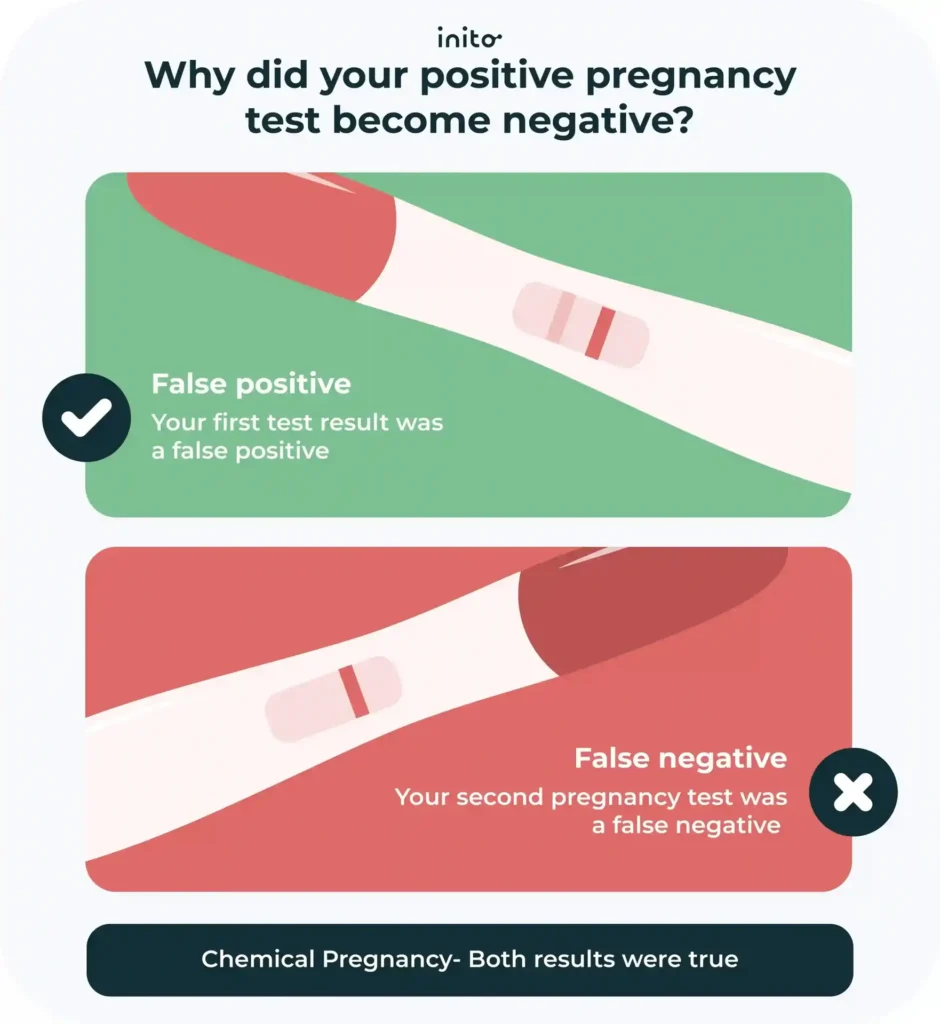
Scenario 1: Your first test gave you a false positive result
In the world of pregnancy testing, false positives are rare. If you did get a true false positive, it would initially appear as a faint line and then turn negative on the next test.
Getting a false positive pregnancy test can happen for a few reasons. In the chart below, you’ll get a glimpse at each one!
Why did I get a false positive? | What should I do? |
“Line eyes” (Misreading a line that’s not there) | Opt for a digital pregnancy test instead. This will help you avoid having to decipher if there’s a line or not. |
Evaporation line | Check the result in the amount of time outlined in the manufacturer’s instructions. |
Expired test | Throw out the test and use a new test that’s not expired. |
High hCG for a reason other than a current pregnancy | If you are taking fertility medications or were recently pregnant, wait until the residual hCG is out of your system. |
Read More: Why is my Pregnancy Test Line Getting Lighter?
As you can see, the main reasons women get false positives are because of user error or having higher amounts of hCG levels for other reasons.
User error with pregnancy tests
Pregnancy testing can be stressful. But even more so if you’re getting unclear or confusing results. Here are some of the most common reasons for user errors.
Line eyes
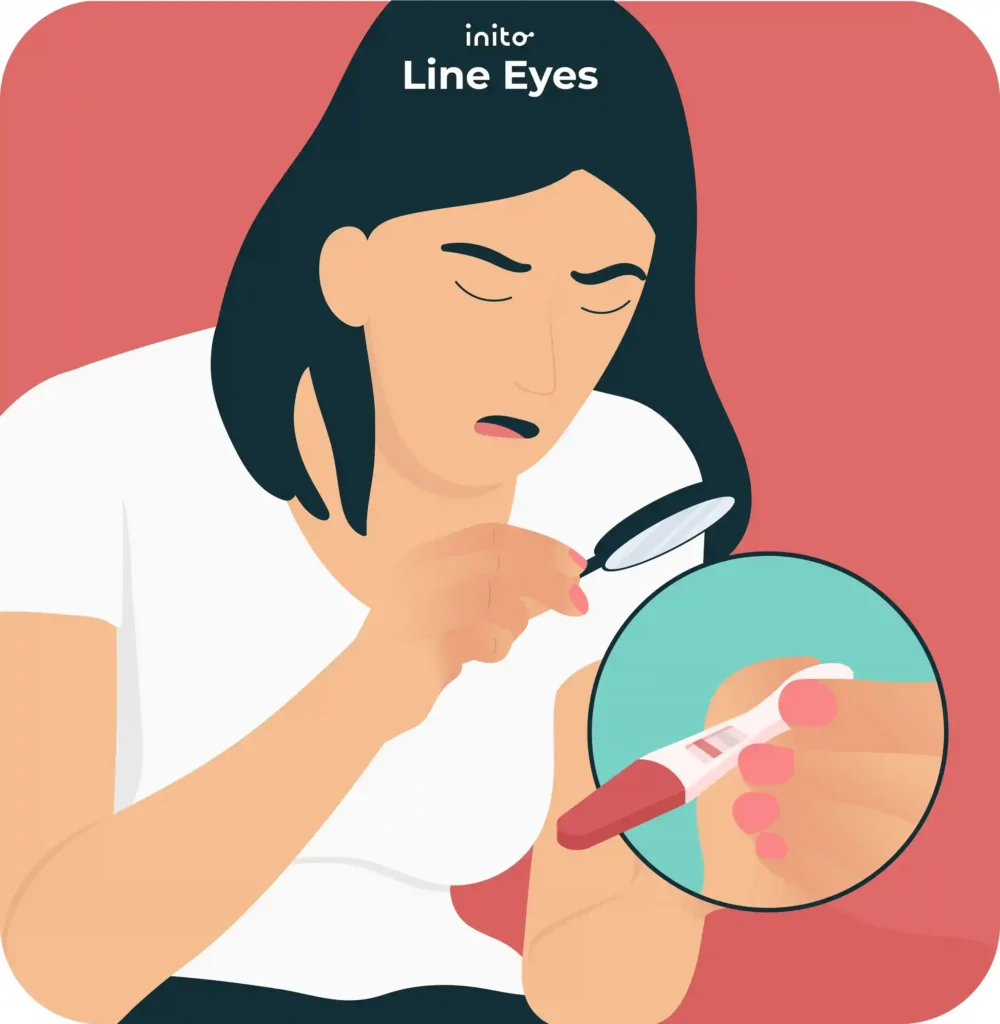
If you’ve been in any sort of pregnancy or fertility support group, you’ve probably seen women talking about “line eyes”. This is when your eyes falsely see lines that may not actually be there.
You’re not alone in having your eyes trick you like this. A lot of women who are TTC experience this phenomenon. So don’t think you’re doing something wrong. If you have line eyes, try having a trusted loved one read your results. Inito’s supportive Facebook group is a great resource too. You can also use a digital pregnancy test instead which will give you a clear + or – result.
Evaporation line

An evaporation line or “evap line” happens when a test sits out exceeding the recommended reading time. Once the liquid evaporates from the test, the salt from your urine can create what looks like a faint line.
Even though a very faint line may be visible, it’s not a true positive result. Want to steer clear of any confusion with an evap line? Read the test results within the recommended time listed in the instructions.
But what if you’re not sure how long you waited? How can you tell between a positive line and an evaporation line? Look at the chart below to find out.
Faint positive line | Evaporation line | |
Color | This line will appear as the same color as the control line on the test. Many tests use pink or blue dyes. | An evap line will not have any color and appear grayish. |
Time | Faint lines are visible after just a few minutes. If you checked your test within the instructed time range, it’s probably a faint line. | An evap line happens once the urine has dried on the test, however long that takes. It could be as short as a few minutes or up to an hour. |
What to do | A faint positive is still a positive test result. So you are almost certainly pregnant! Re-test again the next day to see if the test line is still there. The test line should darken over time. | An evaporation line doesn’t mean you are pregnant. To get a valid result, get rid of that test and use another one following the directions carefully. |
Know more: Evaporation Line on a Pregnancy Test
Expired test
Using an expired pregnancy test could give you inaccurate results. Before testing, check for the expiration date. If the date has already passed, get rid of the tests. Most home pregnancy tests (HPTs) last 1 to 3 years.
Higher hCG levels
Let’s say you’re sure of the following:
- You don’t have line eyes (even someone else read your test result or you took a digital pregnancy test)
- You used the test according to the instructions
- The test is within its expiration date
And yet, you’re still seeing a false positive result.
This could happen if you have detectable amounts of hCG in your system for some other reason. Here are some cases where this is possible:
Using fertility medications

If you are using fertility drugs like the hCG trigger shot, you may have residual hCG in your system from that. With the trigger shot, hCG can remain in your urine for up to 2 weeks. It takes time for your system to clear the hCG out. So if you test before your levels go back down, you could get a false positive.
Recent pregnancy
Another reason you get a false positive is if you were recently pregnant. If you had a recent miscarriage or live birth, hCG can remain in your system for up to 60 days.
See how your hormone chart might look like!
Answer some questions to help us provide you a free personalized hormone chart customized to your hormonal health and conditions
Scenario 2: Your second pregnancy test was a false negative
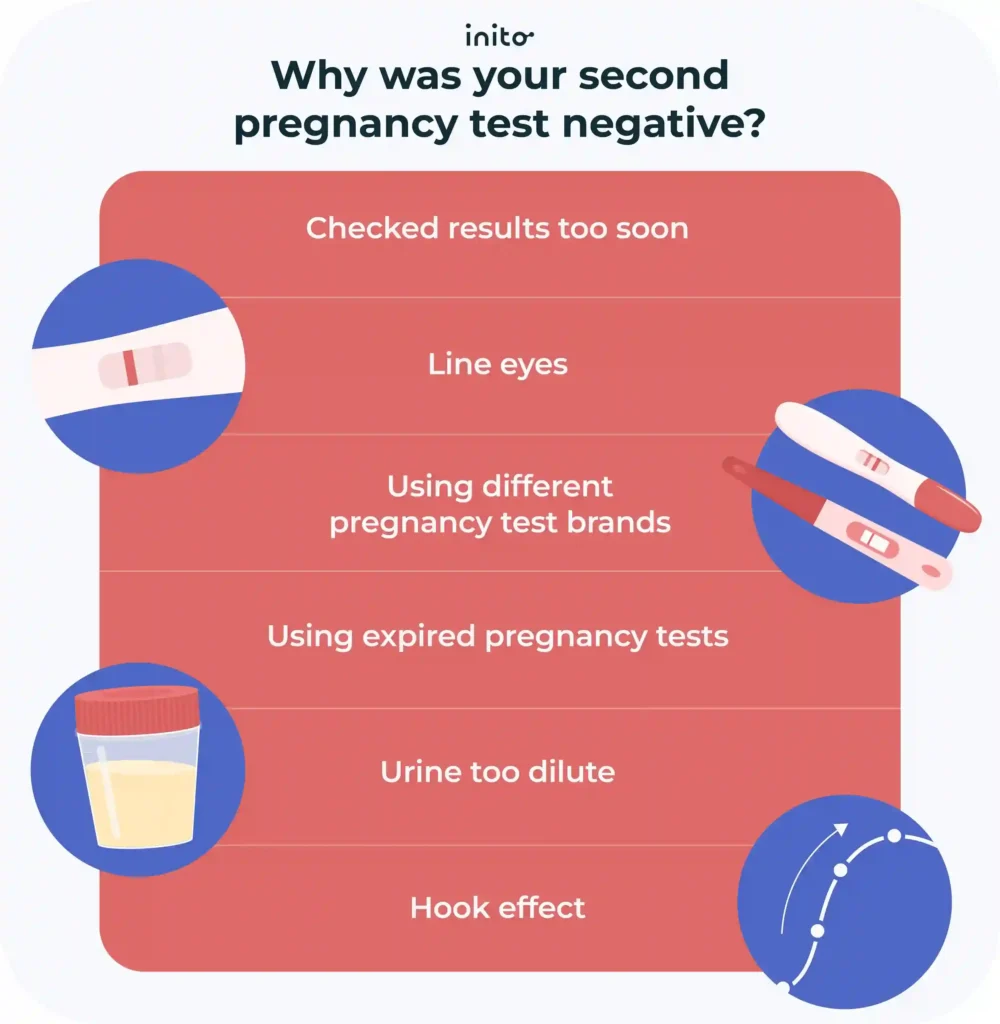
Pretty sure your first test was legit? Still wondering: Why would a pregnancy test be positive one day and negative the next?
Another explanation is that the second pregnancy test result was a false negative. So even if you’re pregnant, you get a negative result. Confusing, right?
Let’s go over all the reasons this could happen. Then you can better determine your unique circumstances.
Why you may get a false negative | What you should do next |
Timing of when you checked the results | Re-read the directions on the test you took. Ensure you read the results within the specified time. |
Line eyes | Retest and have someone else look at the result. |
Pregnancy test expired | Double-check the expiration date of the test you took. If it was past due, buy a new test. |
Different brands of tests | Retest with the same brand you used the first time when you got a positive. |
Dilute urine | Wait until the next morning and take a pregnancy test when you have first-morning urine. |
The “hook effect” | Retest and if it’s still negative, call your doctor if you think you are pregnant. |
As you can see, there are quite a few ways to get a false negative. Keep reading to understand each of these more closely.
You checked the results too soon
Reading the pregnancy test before the instructed time can lead to false negative test results. Go by the exact timing listed on the manufacturer’s instructions.
You have line eyes
We discussed this. Sometimes our brains trick us into seeing lines that aren’t there.
Your pregnancy test has expired
Expired pregnancy test kits can also lead to false negative results. Always check the date on your tests before using them.
You used different pregnancy test brands
Different brands of tests have varying levels of hCG sensitivity. This means that some brands can detect lower amounts of hCG than others. So use the same brand for all your pregnancy tests to get the most accurate readings.
Your urine was too dilute
When you’re more hydrated, your hCG concentration is lower. This can result in either a very faint test line (or even no line at all). This is why it’s best to use First-Morning Urine (FMU). Taking a test first thing in the morning before drinking fluids ensures your hCG levels are at their highest concentration.
Your hCG levels are very high
In rare instances, you could experience what’s known as the “hook effect.” This is more likely to happen if you are pregnant with multiples or even with a molar pregnancy. For the hook effect to occur, hCG levels are usually greater than 500,000 mIU/mL.
The extremely high amount of hCG oversaturates the test, preventing the hCG molecules from bonding properly and giving a false negative result.
Keep in mind, though, that in early pregnancy, your hCG levels would be nowhere near that high. So, this would only likely happen to someone who is much farther along in their pregnancy.
Scenario 3: Both results were accurate, and you may be having a chemical pregnancy
If you did get an actual positive result followed by an accurate negative result, chances are, you’re experiencing a chemical pregnancy.
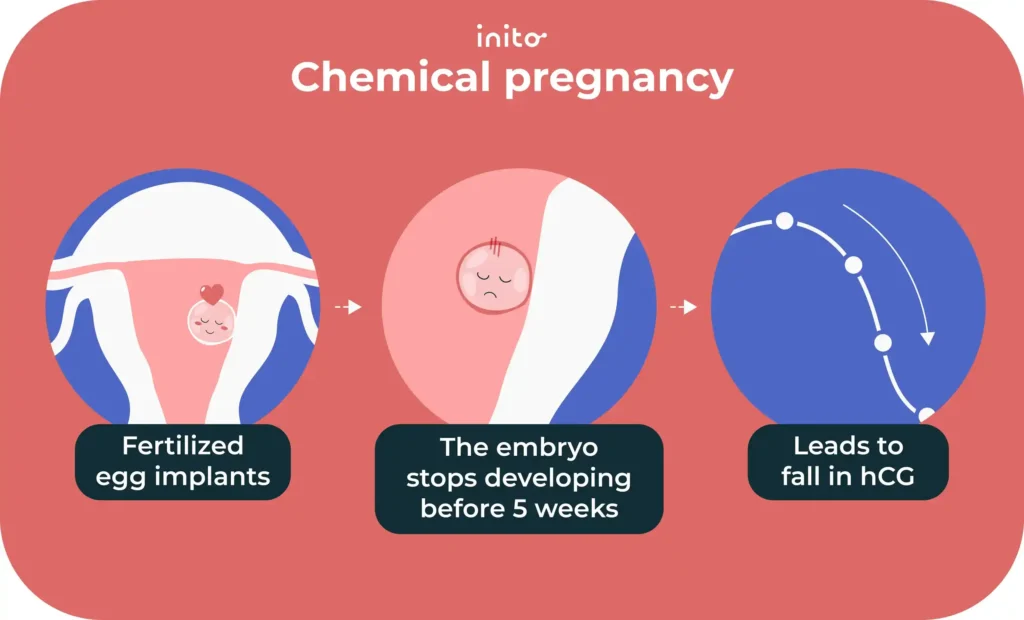
A chemical pregnancy is when you experience a miscarriage before five weeks of gestation. In this type of early pregnancy loss, the fertilized egg implants. But then the embryo stops developing, not too long after implantation. When this happens, your hCG levels begin to fall rapidly.
Because a chemical pregnancy happens so early on, a fetus would not appear on an ultrasound. And you likely wouldn’t have any pregnancy symptoms yet. In most cases, chemical pregnancies are caused by chromosomal abnormalities. Think of it as your body’s way of filtering out a pregnancy that wouldn’t have progressed to a live birth.
What if you had been testing for pregnancy around this time? With a chemical pregnancy, you would initially get a positive result. After the embryo stops developing, you’ll get very faint lines or negative tests. And eventually, you would begin bleeding a few days after your expected period.
And just so you know! Chemical pregnancies have heavy bleeding that contains clots, so you can tell it’s not a true period.
Know more: Chemical Pregnancy: Quick Guide & Need to Knows
Now that you’ve seen the three possible scenarios, let’s discuss whether or not you should test again or see a doctor.
Should you repeat a test if you get a negative result?
Think you may have tested incorrectly or some other error occurred? Certainly, try testing again the next day.
Still getting a negative result the next day but believe you’re pregnant? Wait another week before you take a pregnancy test again. This will give your body ample time to produce detectable amounts of hCG if you are pregnant.
Positive pregnancy test then negative a week later but no bleeding?
This can feel confusing and overwhelming. In this case, the best thing to do is to schedule a visit or call with your doctor. They can help you figure out what may be going on.
When should you visit a doctor?
Here are some cases in which you’ll want to make a trip to your doctor:
- You had two negative pregnancy tests a week apart, but still haven’t gotten your period.
- You’re experiencing pregnancy symptoms even though your tests are negative.
- You have concerning symptoms like very heavy bleeding, bleeding with clots, feeling weak or lightheaded, or severe abdominal pain.
A doctor can test for pregnancy via a blood test and an ultrasound, which will help them determine what’s going on.

FAQs
Yes, this is possible for the same reasons outlined in the article. One specific reason that could be at play here though is the hCG in your urine is too dilute. If you drank fluids and were very hydrated not too long before testing, this is especially possible. Retest again in the morning right when you wake up before drinking anything.
If you followed all the directions carefully when testing, it’s not likely to get a false positive pregnancy test result. When used properly, home pregnancy tests claim to be accurate about 99% of the time.
But there are a handful of scenarios where you could get a false positive. Expired tests, evaporation lines, and line eyes can be to blame. If you have hCG in your system from fertility meds or a recent pregnancy, you could also get a false positive test.
Light bleeding can sometimes happen in early pregnancy. But if you get a positive pregnancy test that turned negative and have bleeding before 5 weeks, that could indicate a chemical pregnancy. This may feel scary but try to stay calm and monitor your bleeding. If it’s very heavy and you’re passing clot-like tissue, this is a sign of miscarriage. Reach out to your doctor immediately if you experience this. They can check your blood hCG levels to see what’s going on.
Was this article helpful?
- Hook Effect in Gestational Trophoblastic Disease – National Library of Medicine
- Accuracy of Early Results with Home Pregnancy Test Kits | AAFP
- Human Chorionic Gonadotropin – StatPearls – NCBI Bookshelf
- Strips of Hope: Accuracy of Home Pregnancy Tests and New Developments – PMC
- The “hook effect” causing a negative pregnancy test in a patient with an advanced molar pregnancy – PMC
- Bleeding During Pregnancy | ACOG








